The Big Dance
The Big Dance
The Story of the NCAA Basketball Tournament
Barry Wilner & Ken Rappoport
TAYLOR TRADE PUBLISHING
Lanham New York Boulder Toronto Plymouth, UK
Published by Taylor Trade Publishing
An imprint of The Rowman & Littlefield Publishing Group, Inc.
4501 Forbes Boulevard, Suite 200, Lanham, Maryland 20706
http://www.rowman.com
Estover Road, Plymouth PL6 7PY, United Kingdom
Distributed by National Book Network
Copyright 2012 by Barry Wilner & Ken Rappoport
All rights reserved . No part of this book may be reproduced in any form or by any electronic or mechanical means, including information storage and retrieval systems, without written permission from the publisher, except by a reviewer who may quote passages in a review.
British Library Cataloguing in Publication Information Available
Library of Congress Cataloging-in-Publication Data
Wilner, Barry.
The big dance : the story of the NCAA basketball tournament / Barry Wilner & Ken
Rappoport.
p. cm.
ISBN 978-1-58979-621-8 (pbk. : alk. paper) ISBN 978-1-58979-622-5
(electronic)
1. NCAA Basketball Tournament--History. 2. BasketballTournamentsUnited
StatesHistory. I. Rappoport, Ken. II. Title.
GV885.49.N37W47 2012
796.323'630973dc23
2011033207
 The paper used in this publication meets the minimum requirements of American National Standard for Information SciencesPermanence of Paper for Printed Library Materials, ANSI/NISO Z39.48-1992.
The paper used in this publication meets the minimum requirements of American National Standard for Information SciencesPermanence of Paper for Printed Library Materials, ANSI/NISO Z39.48-1992.
Printed in the United States of America
For Howard Hobson, the coach who started it all.KR
To the ever-growing Wilner clan, without whose inspiration and understanding I would never get anything accomplished.BW
Acknowledgments
The authors wish to thank Geno Auriemma, Matt Bourque, Bill Fitts, Harry Flournoy, David Lattin, Deborah Jennings, Patrick McKenna, Jim OConnell, John Paquette, Pat Summitt, and Dick Vitale for their valuable contributions to this book.
Introduction
Its a national passion that happens as winter melts into spring.
No, not baseball.
Think bracket sheets.
And Selection Sunday.
In March, it would be hard to find an office, bar, or backroom where someone wasnt filling out bracket sheets for the National Collegiate Athletic Association (NCAA) basketball tournament in what has become a unique sports ritual in America.
Another ritual: the team selection process that takes place on the Sunday before the start of the NCAA playoffs. No matter how often the NCAA expands the size of the field, there is almost always some kind of controversy surrounding teams that are picked or left out.
As of 2011, the NCAA had added three more teams to make it 68 for the field.
And to think, it all started so inauspiciously in 1939 with the University of Oregon winning the first championship in an eight-team field. Hard to believe by todays standards, but the tourney actually lost money$2,531, in factand coaches wondered if having another one was such a good idea.
Good thing that Harold Olsen, the Ohio State basketball coach and a key figure in the National Association of Basketball Coaches (NABC), kept the faith. He originally proposed the idea after taking note of the success of the National Invitation Tournament (NIT) in New York and the National Association of Intercollegiate Athletics (NAIA) tournament in Kansas City. He kept pushing for a tournament that would be managed by the NABC acting as an affiliate of the NCAA.
The original eight-team format featured one representative from each of the NCAAs eight geographical districts. As a representative from the West, Oregons Tall Firs whipped Olsens Midwestern Buckeyes, 4633, for the first national championship.
It didnt take long for the fledgling tourney to start making money, albeit a modest sum at first. In 1940, the winning Indiana team and runner-up Kansas each received $750 in addition to having expenses paid from the net receipts of $9,523.
Soon, a revolutionary change: for the first time, four teams advanced to the finals in New Yorks Madison Square Garden in 1946. The concept of the Final Four was beginning to evolve as Oklahoma A&M (now Oklahoma State) beat North Carolina to become the first team to win consecutive championships. The finals were shown on TV locally in New York, with an estimated viewing audience of 500,000.
The tourney grew by leaps and rebounds. When the championship game was televised in prime time for the first time in 1973, a record audience of 13.5 million homes watched. They saw a great UCLA team destroy Memphis State for its ninth national championship. Two years later, the Bruins won their 10th title in 12 years under John Wooden, who then surprised the nation by retiring after coaching the greatest dynasty in college basketball history.
The size of the national audience in the 1973 finals was a healthy sign in the marriage of the NCAA and TV. It was obvious college basketball was meant for the spotlight of prime-time television.
Interest in the NCAA playoffs reached a new level when Michigan State, led by Magic Johnson, and Indiana State, behind Larry Bird, met in the compelling 1979 final, won by the Spartans.
The game was a turning point in playoff popularity. March Madness would never be the same. And the stakes continued to skyrocket.
Forget about millions. Think billions: $10.8 billion, to be exact.
Thats the staggering figure the NCAA collects in its most recent deal with CBS and Turner Broadcasting for the privilege of televising its tournament, every game live on four outlets.
Here, then, are stories of the movers, shakers, and shot-makers who have made the NCAA basketball tournament an American phenomenon.
McGuires Miracle
Something mystical was going on.
North Carolinas nerve-racking high-wire act during the 195657 basketball season convinced Frank McGuire of that.
There was something eerie about winning 32 straight, the Tar Heels coach said. We won several games we should have lost, we got breaks that were out of this world.
As the Tar Heels winning streak continued to stretch during the season, fans offered McGuire good-luck charms and lucky coins to keep the team on course to the Final Four. By the time the Tar Heels entered the championship round at Kansas City, they had already won 30 straight and were ranked No. 1 in the country.
What happened next must have seemed even more eerie to McGuire: First, the Tar Heels beat Michigan State in triple overtime in the national semifinals. The very next night they went into triple overtime again to beat Kansas for the national title.
Two triple overtimes in two days for the national championship. Can you beat that? McGuire was still pinching himself a year later.
What happened couldnt happen again, in a thousand years, McGuire said.
Believe itno Final Four ever matched that one in excitement, thrills, and spills. And with their 320 record, the Tar Heels set the mark for most victories by an unbeaten championlater matched by Indianas 197576 team.
To say McGuire was the most popular man on campus was an understatement. Even before he led North Carolina to the national championship, he was presented with a sparkling 1957 Cadillac, courtesy of alumni, admirers, and even students, who were not allowed to chip in more than a dollar. Naturally, it was blue and white to reflect the school colors.
In a lighthearted editorial, the Charlotte News took this wry jab at McGuire:
We certainly dont begrudge Mr. McGuire a single cylinder of his prize. We just wish that his less fortunate colleagues could enjoy similar rewards. We understand Dr. James L. Godfrey is having an unusually good year in history but not a whisper have we heard about outfitting him with a new car.

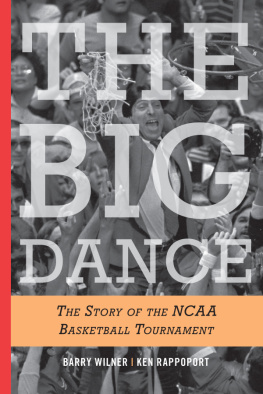
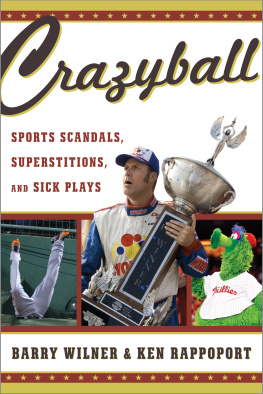

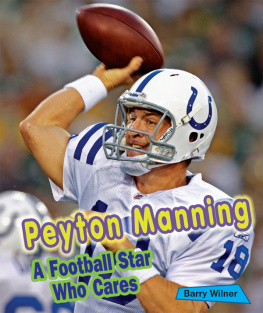
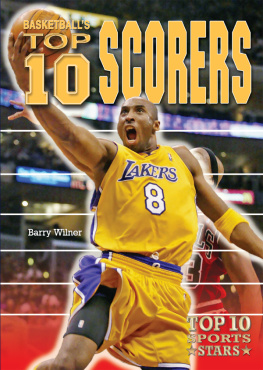
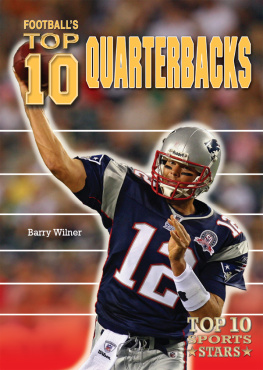


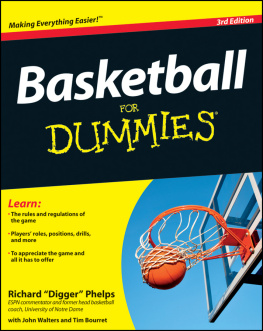

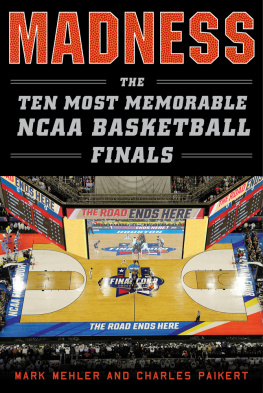

 The paper used in this publication meets the minimum requirements of American National Standard for Information SciencesPermanence of Paper for Printed Library Materials, ANSI/NISO Z39.48-1992.
The paper used in this publication meets the minimum requirements of American National Standard for Information SciencesPermanence of Paper for Printed Library Materials, ANSI/NISO Z39.48-1992.